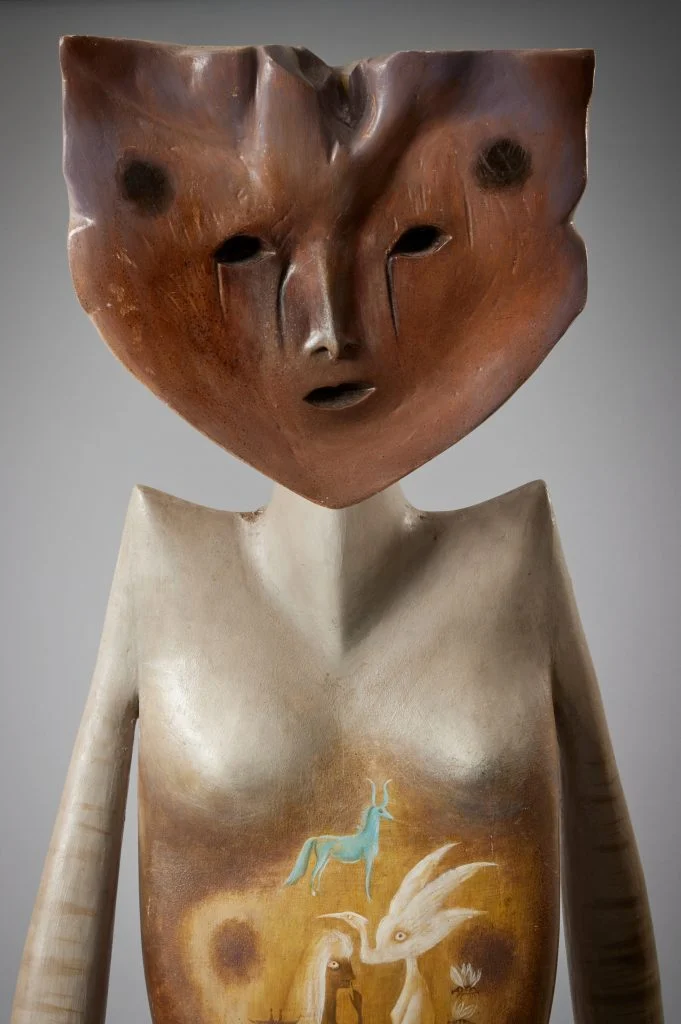A monumental sculpture by British-Mexican surrealist Leonora Carrington, hailed by Sotheby’s as “undoubtedly the greatest sculpture” of her career, is set to lead the Modern Evening Auction on November 18. La Grande Dame (The Cat Woman), making its first auction appearance in nearly 30 years, carries an estimate between $5 million and $7 million.
Created in 1951, La Grande Dame comes from a pivotal period for Carrington, who by then had established herself in Mexico amid a circle of artists who shared her fascination with spiritualism and the occult. The six-foot sculpture is an enigmatic figure with elongated features, carved from wood, and a mysteriously serene expression. “The work synthesizes diverse iconographies of the divine feminine into a human dimension,” says Anna Di Stasi, Sotheby’s head of Latin American Art. She adds that La Grande Dame “creates a profound sense of otherworldly presence, acting as a Surrealist portal to transport the viewer into her wondrous universe.”
This universe unfolds across the sculpture’s surface, depicting a teal-colored unicorn presiding over a mystical scene on the figure’s chest, where a woman passes a glowing egg to another, while a young girl in red awaits with an open palm. The egg, a recurring Carrington motif, symbolizes female power and potential. On the sculpture’s back, the egg appears again, suspended between a dandelion and a wolf-like goddess, lending further mystery to the piece.
Sotheby’s auctioning of La Grande Dame comes amid a surge in interest in Carrington’s work, especially following her death in 2011. Belated retrospectives of her work have been held at prominent museums across the U.K., Spain, and Denmark. Previously owned by noted Surrealist patron Edward James, La Grande Dame has graced top venues, including London’s Tate Modern and New York’s Metropolitan Museum of Art.
Carrington’s market appeal is similarly on the rise. This past May, her painting Les Distractions de Dagobert (1945)—a fantastical portrait of 7th-century Frankish king Dagobert I—sold at Sotheby’s for $28.5 million, a striking increase from its 1995 sale price of $475,500 (around $990,000 today, adjusted for inflation).
However, Carrington’s legacy has recently come under scrutiny. A debate has emerged among experts and family members regarding the authenticity of her late bronze sculptures, according to a recent Art Newspaper report. In her final years, Carrington was unable to paint due to arthritis but continued to create art, raising questions about work from this period.
Pablo Weisz Carrington, her younger son and head of Consejo Leonora Carrington, certifies many of these bronzes, claiming they were crafted under her direction. Gabriel Weisz Carrington, the elder son and director of Fundación Leonora Carrington, argues instead that some of these bronzes are products of exploitative foundries. For Carrington’s admirers, the controversy adds an ironic twist to the life of an artist who delighted in the surreal.



